Seven Questions Over Breakfast with Petr Horáček
 April 1st, 2014 by jules
April 1st, 2014 by jules
 The Bologna Children’s Book Fair may be over, but I’m still on an international kick here at 7-Imp. Today, I welcome author-illustrator Petr Horáček, born in Czechoslovakia and currently living in England.
The Bologna Children’s Book Fair may be over, but I’m still on an international kick here at 7-Imp. Today, I welcome author-illustrator Petr Horáček, born in Czechoslovakia and currently living in England.
Horáček has been making picture books for over ten years now, one reviewer even describing his vibrant and textured mixed-media paintings and collages as “strangely beautiful.” It may not be surprising to many to read below that Petr gets great inspiration from the work of Eric Carle. In fact, he describes having first seen Carle’s work as a life-changing moment, indeed. Both illustrators work in bright colors and craft stories that are gentle and reassuring to the youngest of readers. In fact, as you’ll also see below, Petr has many a board book under his belt, including some new ones coming from Candlewick this Fall — and he has passionate opinions about the role of board books in children’s lives.
It turns out that breakfast is Petr’s favourite meal of the day and always has been. “Both my parents worked,” he tells me. “They had already gone when our neighbour woke me up. The large lady pushed her head around the door, said ‘good morning,’ and disappeared. I had to wake up, get washed, and go to the kitchen, where on the table was hot cocoa and bread, spread with butter, honey, or jam. The radio was playing music approved by the communist government, and a voice coming from the radio was telling us that it was nearly 7 a.m. and, therefore, time to go to school.”
Petr’s favorite breakfast was always these spreads with hot cocoa and Czech rolls with butter. But “I rarely have cocoa and bread for breakfast these days,” he says. “I have muesli with bran flakes, cinnamon, and cold milk. It is my second choice. It is a healthier option.”
I think today we should have some cocoa and rolls, though. I’m all for being decadent when visitors arrive. I’ll set the table while getting the basics from Petr before our seven questions over breakfast. I thank him for visiting and sharing lots of art.

Jules: Are you an illustrator or author/illustrator?
Petr: I consider myself both.
I studied fine art and, therefore, working on the pictures is what I like best. I also like making up stories, but getting it right and making it work so that I can make a nice picture book out of it is a different story.
I’m very lucky to work with my editors, Denise and Louise, at Walker Books. They make my life much easier.
I occasionally illustrate for some other authors. I don’t do it very often, and I find it very challenging. In my books I always start with a picture. The text is the last thing. Working on somebody else’s text is working the other way around. Starting with the text — for me, it is definitely harder.
Jules: Can you list your books-to-date?

Petr: PICTURE BOOKS:
- Animal Opposites
- Animal Counting
- Jonathan & Martha
- Puffin Peter
- The Fly
- Suzy Goose and the Christmas Star
- My Elephant
- Look Out, Suzy Goose
- Butterfly Butterfly: A Book of Colors
- Silly Suzy Goose
- A New House for Mouse
- When the Moon Smiled
- Flip’s Snowman
- Flip’s Day
BOARD BOOKS:
- Time for Bed (coming from Candlewick in Fall 2014)
- Honk Honk! Baa Baa!
- Creepy Crawly
- Night Night
- Choo Choo
- Beep Beep
- Flutter by, Butterfly
- Hello, Little Bird
- Run, Mouse, Run!
- This Little Cat
- What is Black and White?
- Strawberries Are Red
PHONIC BOOKS:
BOOK ILLUSTRATIONS:
- Zoo Next to the Museum
- [Stella Gurney’s] Kasia’s Surprise
- [Wendy Lee’s] Leon Spreads His Wings
- The Kalundborg Gang
- The Moon’s Christmas
- Witte Pietje
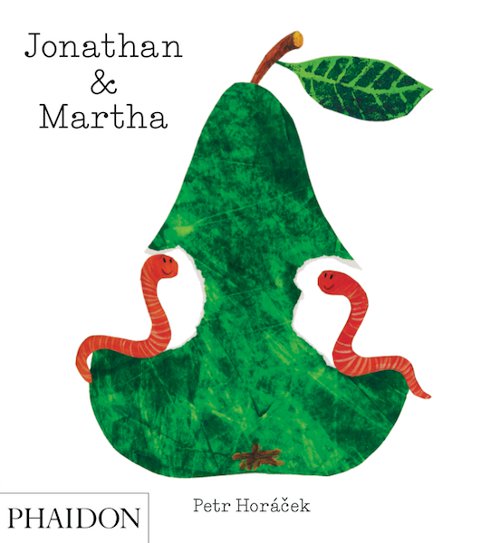
Jules: What is your usual medium?
Petr: Colours and texture are important in my work. The materials I use inspire me, and I’m always ready to try something new.
I use pencils, coloured pencils, wax crayons, watercolours, pastels, and acrylics.
I also use collage in my work. I paint and print patterns on papers, which I then cut and use in my illustrations.
Pencil and acrylic are probably my favourite materials.
(Click spreads to enlarge)
Jules: If you have illustrated for various age ranges (such as, both picture books and early reader books OR, say, picture books and chapter books), can you briefly discuss the differences, if any, in illustrating for one age group to another?
Petr: I do board books, novelty and pop-up books, picture books — and I have also illustrated some early readers.
Board books are something I’m quite proud of. You hardly ever hear about authors who illustrate board books. In fact, you hardly see good board books in the shops. Board books are thought to be something too small to be taken seriously.
People think that board books are for babies; therefore, it doesn’t mater what you show them, as long there are some pictures. It’s rubbish, of course, and it makes me very cross when I hear that bookshops don’t want to keep board books, because they take too much space on the shelves and make little profit.


I take my board books seriously. A board book is often a child’s very first contact with visual art and literature.
Children may not have as many experiences as adults, but it doesn’t mean that they are stupid. They definitely deserve more than just a squeaky washable book with an image of a flower and dolphin. To this day, I have published about twelve board books and I’m working on more as we speak.
All of these books have some novelty aspects. Pages build up to a final picture as you turn the page. The pages have holes and cut-outs so that you can chase the mouse through the book and so on.
(Click second spread to enlarge)
I also like working on picture books. I like thinking and developing new ideas. The format of a picture book gives me the chance to paint more and play with the pictures.
I like to think that the difference between a board book and a picture book is similar to the difference between a poem and a novel. With board books, you have to think simple, trying to fit a story or message in to a very limited format. A picture book gives you more space.
(Click spreads to enlarge)
Novelty books with holes and cut-outs are fun. You have to think about the book as a complete object, where every cut-out and detail has its place. So what you see through the hole of one page makes sense even when you turn the page and look back.
It takes time and lots of sketching. It’s almost a mathematical task sometimes. I enjoy it, which always surprises me, since at school I didn’t like maths and difficult logical exercises. Too much thinking always hurt me.
(Candlewick, 2007)
(Click spread to enlarge)
A very different experience for me is working on early reader chapter books. I don’t write these kinds of books, so I have to follow the text written by somebody else. My imagination is working but is usually preoccupied with too many details, and I find it quite hard to simplify the pictures. I like the challenge, but it can be hard work sometimes.
(Candlewick, 2009)
(Click spreads to enlarge)
Jules: Where are your stompin’ grounds?
Petr: I was born and lived most of my life in the capital city of the Czech Republic Prague. Prague is beautiful but also quite busy, as you can imagine.
Now I live in Worcester in the middle of England. It’s a rather pretty and quiet city. I like that. It’s easy to travel anywhere from here. I cycle to the city, and it takes no time to go to the countryside if you wish to do so.
(Candlewick, 2008)
(Click spread to enlarge)
Jules: Can you tell me about your road to publication?
Petr: I started to write and illustrate books around the time when my first daughter was born. At the time, I was working as an art technician in a high school.
The mother of one of the students had written a book and was looking for somebody who could draw. I had no idea about the publishing world, and neither did she, but we worked together. The books were self-published and, therefore, never reached a shop. I realised that I loved working on these books, and it inspired me to write my own stories.
(Candlewick, 2010)
(Click spread to enlarge)
Probably the final point was when I saw the book The Very Hungry Caterpillar by Eric Carle. The book was given to my daughter, when she was born, by my friend. Coming from a different country, I didn’t know about the existence of this book. I didn’t know how well-known it was. I thought it was a true masterpiece, and I wished I could do something like this myself.
Over the next couple of years, I made some mock-ups and sent them to agents and publishers.
(Walker Books, 2010)
(Click spread to enlarge)
I must say I’m very grateful to my wife, who didn’t try to explain to me that I was naive to think that I could be published. She would have had a case, though. I didn’t have an agent, and my English was almost non-existent. Instead, she gave me all the support I needed. She helped me with my texts and letters to publishers.
I got a few nicely-written rejection letters, but one day I got a phone call from Random House. On the line was a very kind editor who liked my books. He gave me some tips and said that, once I re-worked some of my ideas, we could meet up for a chat. I was thrilled. The next day I received another phone call. This time it was Walker Books. They asked me to come to see them, and this is how I ended up with one of the best publishers of children’s books in England.
It was at just the right time, since I had already signed myself up for stacking shelves in a supermarket. Times were hard.
My first books were Strawberries Are Red and What is Black and White? I got my first award for these two books, “Newcomer 2001,” from Books for Children.
Jules: Can you please point readers to your web site and/or blog?
Petr: My website is at www.petrhoracek.co.uk. I do write a blog. It’s accessible from my website.
Jules: If you do school visits, tell me what they’re like.
Petr: I do quite a few school visits every year. Those are well-organised for me by Speaking of Books.
I usually do one or two talks in the morning. I show lots of images and pictures, using a slide show. I talk about my work and about the books. I try to explain how the idea for a book develops, showing all the sketches and pictures which didn’t make it to the book. I try to inspire the children by showing them that is okay to mess up or not finish a story — and that we all have to go through the learning process. What is important is not to give up and start again, if necessary.
(Click each to enlarge)
7-Imp: If you teach illustration, by chance, tell me how that influences your work as an illustrator.
Petr: I don’t teach. I’m still in the learning process myself.
Occasionally, I do talks for students or a panel with other authors. It’s always inspiring for me, and I always leave with the feeling that I still have much to learn.
Jules: Any new titles/projects you might be working on now that you can tell me about?
Petr: I’m always thinking about new board books.
I have finished a picture book, which is going to be called The Mouse Who Ate the Moon [to be published by Candlewick in the Fall]. It’s a sequel to A New House for Mouse.
Recently, I headed out to the Czech Republic, where in the countryside by the woods I wrote down some new ideas.
(Click spreads to enlarge)
 Okay, our cocoa is ready, and it’s time to get a bit more detailed with seven questions over breakfast. I thank Petr again for visiting 7-Imp.
Okay, our cocoa is ready, and it’s time to get a bit more detailed with seven questions over breakfast. I thank Petr again for visiting 7-Imp.
1. Jules: What exactly is your process when you are illustrating a book? You can start wherever you’d like when answering: getting initial ideas, starting to illustrate, or even what it’s like under deadline, etc. Do you outline a great deal of the book before you illustrate or just let your muse lead you on and see where you end up?
Petr: I studied fine art, and things I see around inspire me. It could be an abstract painting in a gallery, a drawing done by a child, or an interesting photo in a magazine.
and I still paint when I can.”
(Click each one to enlarge)
I start sketching the story first on separate sheets of papers. I draw twelve windows that represent twelve double spreads. Then I try to fit the story into those frames. I often have to draw a few more, because I can’t fit the story in. I edit the length of the story later. I keep changing and editing the story. Each time, my doodle drawings get better and more precise.
As I’m sketching, I’m thinking about how to do the illustrations and what materials I’ll use. I also start to write the text under the thumbnails.
This one is The Fly.”
(Click to enlarge)
I choose one of the spreads I want to illustrate first. At this point, I get quite excited about the book. The way that I paint the first picture is usually how I will deal with the rest of the book.
I use collage in my artwork. It gives me a chance to loosen up. I like shifting the images on the paper and finding something “extra.” I do each picture at least twice, sometimes more. I choose the best one for the book.
I’m lucky to work with two very good editors. I always listen to what they have to say, and I’m quite happy to do as many changes as necessary.
but never finished.”
(Click sketch to enlarge)
2. Jules: Describe your studio or usual work space.
Petr: I work at home. I have my studio in the attic. I built it mostly myself. It’s not very big, so I have to be organized. I have a sky-light window, which faces south, and from my window I can see our garden and the gardens of our neighbours. I can also see the Malvern Hills, if I stretch a bit.
I work at the table, which has toughened glass on it. It’s rather practical and easy to keep clean. I have another table on my right side. It’s a table for the computer and printer. It’s always partly covered with things that belong to my children, such as bits of paper and printed homework that they don’t want anymore.
In front of me and behind the desk are steps downstairs and a wall with pictures and prints done by my favorite Czech illustrator, Jiří Šalamoun. There are also pictures and drawings done by my children. Under these pictures, you can see shelves in the length of the house, full of CDs.
Behind me is a hi-fi, speakers, and books. On the side where the window is are shelves and storage, where I keep papers and drawings.
3. Jules: As a book-lover, it interests me: What books or authors and/or illustrators influenced you as an early reader?
Petr: As a child, I never was a great reader. When I was little, nobody talked about dyslexia. I preferred to listen to stories on the radio — or somebody reading to me.
I liked books for the illustrations. I could look at a book with nice pictures for ages, but it still didn’t make me want to read it.
The books I grew up with were, of course, very different from books you know. I liked stories about a robber called Rumcajs. He was a nice guy who lived in the woods with his wife Manka and little boy Cipisek.
One character from Czech books people may know was Krteček, a little mole, whose friend was a little mouse. The author/illustrator was Zdeněk Miler.
We had lots of very talented people, such as Jiří Trnka. In fact he was a great puppet-maker, animator, illustrator, and writer.
I love very old, half-animated and half-acted films done by Karel Zeman.
Two of my favourite Czech illustrators are Jiří Šalamoun and, of course, Josef Lada.
(Click each to enlarge)
4. Jules: If you could have three (living) authors or illustrators—whom you have not yet met—over for coffee or a glass of rich, red wine, whom would you choose? (Some people cheat and list deceased authors/illustrators. I won’t tell.)
Petr: This is a tricky question, since the creator of interesting art could be a quite boring person to talk to, but I would take a risk and love to witness a conversation between Josef Lada, Jiří Trnka, and Eric Carle. I know that you may not know Josef Lada and Jiri Trnka, but I’ve read their autobiographies, and—trust me—they were very interesting guys with very interesting things to say. And Eric Carle? Well he is one of the best, and I’m sure he would fit well.
(Click to enlarge)
5. Jules: What is currently in rotation on your iPod or loaded in your CD player? Do you listen to music while you create books?
Petr: Oh, don’t get me started. I’ve been always working with music, and I listen to almost everything, except perhaps pop music and jazz.
My wife comes from a musical family, she is a very good cello and viola de gamba player, and she is responsible for my likes and taste in classical music. I like renaissance and baroque music. I also like Stravinsky and some of the classical contemporary music. From Stravinsky, it is just a step to Frank Zappa and from there … well, everything.
When I need to think or relax, I can listen to Monteverdi, Buxtehude, or Glenn Gould playing Bach. When I’m working on the pictures, it could be anything from Pink Floyd, Sonic Youth, Radiohead,
In my CD player at the moment are Patti Smith and Nick Cave.
(Click to enlarge)
6. Jules: What’s one thing that most people don’t know about you?
Petr: I did mention my dyslexia. I can’t spell very well. In English or in Czech.
7. Jules: Is there something you wish interviewers would ask you — but never do? Feel free to ask and respond here.
Petr: I have no problem answering any questions people ask me, but at the same time I don’t consider myself to be so interesting that I need to shout outloud everything about myself.
Also, next to my table I keep little sketchbooks. When I have enough of working or when I feel like it, I do a little drawing into them. I fill them up with cut-outs from papers and with little collages. I also make little pictures about what I just heard on the radio or what I remember from my dreams. I like these drawings, since they are a kind of diary. I look at them from time to time for inspiration.

Jules: What is your favorite word?
Petr: I’ve seen this question before, and I found it very strange that I can’t really answer it. I don’t really have a favourite word. Maybe the word “right” is the one I like to use.
Jules: What is your least favorite word?
Petr: Same as above, but there is one phrase I truly hate: “What are you on about?” This drives me mad.
Jules: What turns you on creatively, spiritually or emotionally?
Petr: A walk in the woods, being in the countryside, or a good art exhibition.
Jules: What turns you off?
Petr: A day by the computer, answering emails or writing explanations to something that should be obvious.
7-Imp: What is your favorite curse word? (optional)
Petr: “Do prdele” in Czech. (It means “Bugger.”)
In English, “fuckity fuck!” (It means … oh, well …)
Jules: What sound or noise do you love?
Petr: I love sounds — the sound of a dog barking in distance, the sound of a train coming from far away, the sound of cockerel in the morning, a gentle knock on the door, the sound of an ironing board when somebody is ironing …
Jules: What sound or noise do you hate?
Petr: Anything too noisy. Who likes the sound of a dentist’s drill?
Jules: What profession other than your own would you like to attempt?
Petr: I would like to work with wood. Being a carpenter would be nice.
Jules: What profession would you not like to do?
Petr: Accounting would be a nightmare.
Jules: If Heaven exists, what would you like to hear God say when you arrive at the Pearly Gates?
Petr: “Hi, mate. Come in. It’s nice to meet you finally. I love what you do.”
I would say:
“Taa. I like your work, too.”
Him: “Coffee?”
Me: “Yes, please. Strong with milk. No sugar.”
The black-and-white photo of Petr was taken by Anthony Pearson.
All artwork and images are used with permission of Petr Horáček.
WHAT IS BLACK AND WHITE? Copyright © 2001 by Petr Horácek. Reproduced by permission of the publisher, Candlewick Press, Somerville, MA on behalf of Walker Books, London.
ANIMAL OPPOSITES. Copyright © 2013 by Petr Horácek. Reproduced by permission of the publisher, Candlewick Press, Somerville, MA on behalf of Walker Books, London.
RUN, MOUSE, RUN! Copyright © 2005 by Petr Horácek. Reproduced by permission of the publisher, Candlewick Press, Somerville, MA on behalf of Walker Books, London.
PUFFIN PETER. Copyright © 2011 by Petr Horácek. Reproduced by permission of the publisher, Candlewick Press, Somerville, MA on behalf of Walker Books, London.
BUTTERFLY, BUTTERFLY. Copyright © 2007 by Petr Horácek. Reproduced by permission of the publisher, Candlewick Press, Somerville, MA on behalf of Walker Books, London.
MY ELEPHANT. Copyright © 2009 by Petr Horácek. Reproduced by permission of the publisher, Candlewick Press, Somerville, MA on behalf of Walker Books, London.
LOOK OUT SUZY GOOSE. Copyright © 2008 by Petr Horácek. Reproduced by permission of the publisher, Candlewick Press, Somerville, MA on behalf of Walker Books, London.
SUZY GOOSE AND THE CHRISTMAS STAR. Copyright © 2010 by Petr Horácek. Reproduced by permission of the publisher, Candlewick Press, Somerville, MA on behalf of Walker Books, London.
THE FLY. Copyright © 2010 by Petr Horácek. Reproduced by permission of the publisher, Candlewick Press, Somerville, MA on behalf of Walker Books, London.
STRAWBERRIES ARE RED. Copyright © 2001 by Petr Horácek. Reproduced by permission of the publisher, Candlewick Press, Somerville, MA on behalf of Walker Books, London.
A NEW HOUSE FOR MOUSE. Copyright © 2004 by Petr Horácek. Reproduced by permission of the publisher, Candlewick Press, Somerville, MA on behalf of Walker Books, London.
The spiffy and slightly sinister gentleman introducing the Pivot Questionnaire is Alfred, © 2009 Matt Phelan.


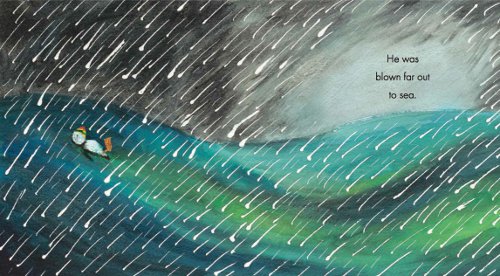

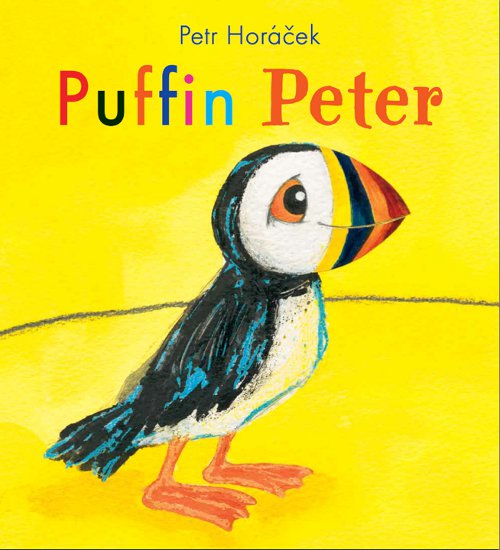


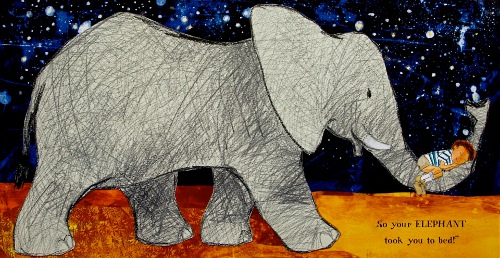








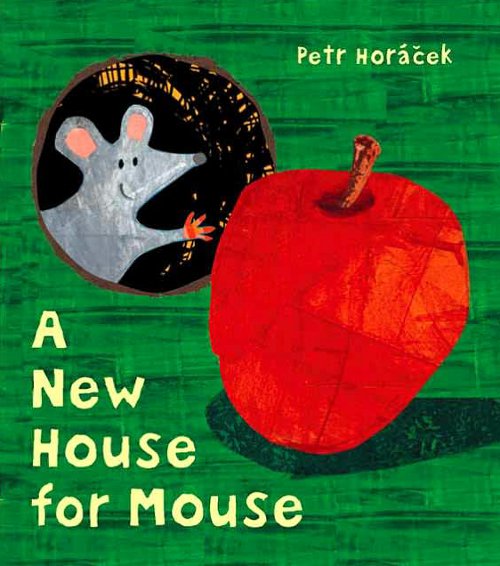



It is now 1:10 AM on Wednesday but I had to stay up to read this interview. This is completely amazing Peter and Jules. The abundance of artwork is glorious. Thank you both.
Great interview. Fascinating, intelligent and inspiring. Hooray for Petr.
Inspiring interview! I enjoyed reading about Petr’s way to publication, but mostly just couldn’t take my eyes off the sketches he draws for fun. So wonderful!
What a lovely man, and what an inspiring interview. Thanks Jules.